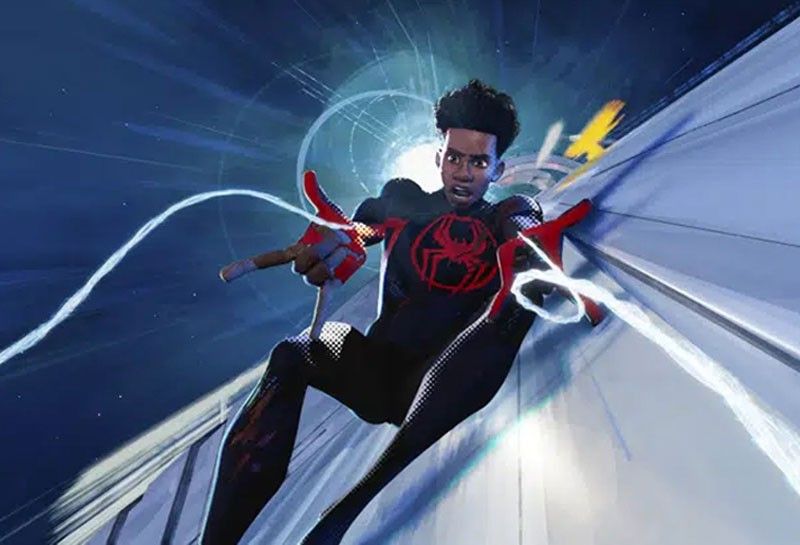‘Spider-Man: Across the Spider-Verse’ is a worthy follow-up to 2018 original

CEBU, Philippines — When “Spider-Man: Into The Spider-Verse” was released in 2018, it changed the way mainstream animated films should be presented thanks to its fresh comic book-like style. Its hybrid use of 2D and CGI animation influenced succeeding films such as “The Mitchells vs. the Machines”, “Puss in Boots: The Last Wish”, and the upcoming Seth Rogen-produced “Teenage Mutant Ninja Turtles: Mutant Mayhem.”
It also altered how fans and casual viewers see the lore of Spider-Man with its multiverse concept allowing various characters besides Peter Parker to take on the mantle. Introducing the comic fan-favorite Miles Morales to the big screen made viewers slowly accept the idea that Parker may need to pass on the torch to someone else when the time comes in other Spider-Man adaptations including Marvel Cinematic Universe’s take on the character.
After five years of waiting, Morales (voiced by Shameik Moore) along with Gwen Stacy aka Spider-Woman (Hailee Steinfeld), and Peter B. Parker (Jake Johnson) return for another multiverse adventure in “Across the Spider-Verse”, now on its third week in Philippine cinemas.
The 15-year-old Black Puerto Rican teenager from Brooklyn, New York reunites with Stacey and Parker and meets his fellow Spider-People from different multiverses which are called the “Spider-Society”. However, Morales finds himself at odds with their leader Miguel O’Hara aka Spider-Man 2099 (Oscar Isaac) when they disagree on handling a threat named “The Spot” (Jason Schwartzman) who swears revenge on Morales – risking his future and the fate of the Spider-Society.
To follow up a well-loved and critically acclaimed animation film is a hard task, but “Across the Spider-Verse” is an exception. It managed to exceed the standards of its predecessor by doubling down on its multiverse world-building and expanding the lore of the Spider-Verse.
Without spoiling the specifics, Morales continues to show himself a worthy successor of the Spider-Man title with deeper character development. There were certain moments where Morales was treated as an outsider rather than a worthy member of the Spider-Society. This makes viewers sympathize with the teenager who just wants to be a good person.
Elements of his arc may allude to the initial backlash his comic book variant received when he first debuted in 2011, most of which was rooted in racist cynicism. The irony is that this backlash is quite on-theme for the people behind the Spider-Man mask, often feeling like they are an outsider when they are not donning the super suit.
Instead of having to defend Morales’ place in the superhero world, the film uses it as a reason why Morales deserves to be Spider-Man just like anyone else. After all, the whole point of Spider-Man is that you are defined by the heroic things you do behind the mask, not by how you look.
There is also interesting character development for Stacey who takes up the opening act of the film by showing her origins. It gives much-needed context to the things she does for viewers to understand her motivations despite how questionable some of her decisions were.
Aside from O’Hara, viewers can expect to meet new Spideys such as Spider-Punk (Daniel Kaluuya), Jess Drew aka Spider-Woman variant (Issa Rae), and Spider-Man India (Karan Soni). Much like the first film, there are no characters to actively dislike. Fans may like the tough attitudes of O’Hara and Drew while others will like the fun personalities of Spider-Punk and Spider-Man India.
The voice performances are worthy of praise. Moore, 28, and Steinfeld, 26, have much younger characters, but were still able to give out excellent vocal performances as teeners. Issac’s take on O’Hara is also notable as his deep voice complements his character’s serious demeanor.
“Across the Spider-Verse” continues to show how an animation style is a powerful tool in storytelling. There were certain scenes where a comic book panel-like style was used to portray the feelings of the characters – enriching the story’s emotions. It feels immersive that it almost seems like you are actually witnessing the whole story on a personal level. There were also live-action elements that were implemented so smoothly.
The film ends on a cliffhanger to ensure fans will tune in for the conclusion of the Spider-Man Miles Morales animated trilogy next year. Just don’t expect a post-credit scene that teases what “Beyond the Spider-Verse” might be about because the ending pretty much sets the tone for the next one anyway. Four and a half stars out of five.
- Latest




















